Value Midrange Common Components
While AMD and Intel architectures differ in sockets and sometimes memory configurations, there is more that is the same in the two systems than there is that is different. For that reason the Intel and AMD Value Midrange Systems share a number of common components.
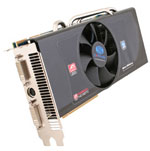 |
For video card best value we have paired the Sapphire Radeon HD 4870 1GB with both the Intel and AMD systems. As pointed out in the recent Holiday 2008 GPU Guide, the 4870 1GB is the minimum card we use internally for gaming comparisons. The Sapphire was our guide choice, but $230 seems the going rate for the 4870 1GB these days. It is available from MSI, Diamond, ASUS, HIS, Power Color, and others so you can shop for the best buy.
On the Intel system, the Gigabyte GA-EP45-UD3P motherboard provides a second PCI x16 slot. Video performance can be improved even further by adding a second Radeon HD 4870 1GB in CrossFire mode. You can also start with two 4870 512MB video cards that are now available for as little as $180 each from Power Color. This will provide 4870 CrossFire for a video card cost for both cards of just $360 total. The motherboard choice for AMD is the Foxconn A79A-S, which also provides multiple x16 slots for CrossFire. The same video options apply to the AMD Value Midrange system.
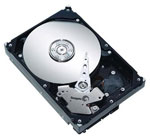 |
Hard drive capacity continues to grow, as you can see in our selection of the Seagate Barracuda 1TB drive (1000GB). While the Seagate 1.5TB drive was plagued with problems at its release, the performance and reliability of the 1TB Seagate has been excellent in our testing so far. For a price of around $100 the value is incredible. While there are differences between hard drives, outside of running benchmarks most people aren't likely to notice the difference in performance between Western Digital, Seagate, Samsung, Hitachi, and other major brands. All are worthy of consideration if the price per gigabyte (or terabyte) is right.
 |
We feel the optical drive for a best value midrange system needs to play Blu-Ray disks. The flexible LG GGC-H20LK has the ability to read both Blu-Ray and HD format disks. It also can burn DVDs at 16x speed in single or dual-layer formats. It cannot, however, burn 25GB/50GB Blu-Ray disks; adding that capability raises the cost to around $200 to $250. BD burners like the $200 LITE-ON 4X BD-R 12X DVD+R 4X Blu-ray DVD-ROM or the $230 LG 6X Blu-Ray Burner GGW-H20LK are good choices.
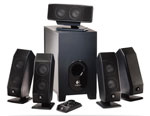 |
Cases are often very personal choices when it comes to features, but the Cooler Master RC-690-KKN1-GP is one of our favorites and it is also very well regarded by our readers. It comes standard with three 120mm fans for excellent cooling and low noise, and the power supply mounts in the bottom of the case. Audio, USB, Firewire, and eSATA ports are on top of the case, which we find an ideal location. The front bays are also ventilated metal mesh for cooling and appearance. If you prefer a more traditional case configuration, the Cooler Master Mystique, also selling for $80, mounts the PSU on top, provides font panel jacks, and is loaded with expansion ports and two 120mm fans.
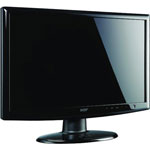 |
The last major component to discuss is the display, and here the tilt was toward best value at full 1080p HD (1920x1080) resolution. The new class of 16:9 21.5" LCD monitors provide true 1080p resolution at the break-through price of just $199. That stellar value shows just how far LCD technology has progressed. If your budget allows, or you just prefer a slightly bigger screen at the same resolution, you can move up to a 24" 16:9 1080p LCD that is selling today for around $300. Alternately, you can downgrade the resolution to 1680x1050 for slightly larger pixels (i.e. more readable text) if you purchase a 22" LCD and save a bit of money.
While the Creative Sound Blaster X-Fi Xtreme Audio is not the best sound card on the market, it is definitely tops in game compatibility. This Creative X-Fi card does a good job with audio, won't break the bank at $50, and it is a great choice for either set of powered speakers. Some would argue that onboard sound is all you need for a $1500 system, and if you are inclined to agree or have a really tight budget, you can save $50 on either the Intel or AMD Value Midrange builds just by using onboard sound.
 |
The Logitech X-540 has been a perennial favorite of users as a reasonably priced but good performing, powered 5.1 computer speaker system. It will certainly not challenge the performance of a separate Dolby amplifier powering audiophile speakers, but it will provide surprisingly good sound for the price.
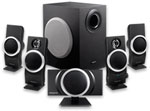 |
The Creative Inspire T6100 76 Watts 5.1 Speaker System is a similar powered speaker system that is selling at Amazon for just $57. The Creative speaker system is our choice in the AMD Value Midrange system, but either speaker system is a good choice for these Value Midrange builds.
Our choice for the top of the midrange is the well-regarded Logitech G51 system. This is mentioned only because the G51 is now just $90 after a $40 rebate, so if you want a better speaker system your net cost for choosing the G51 instead is just $10 more than the Logitech X-540 or $33 more than the Creative Inspire T6100.
 |
These are clearly desktop systems, so the keyboard and optical mouse are the basic Microsoft OEM kit. If you have more specific needs or a favorite gaming mouse you likely know exactly what you prefer. The Microsoft pair is very capable for most. For greatest compatibility, we have chosen Microsoft Vista Home Premium OEM as the Operating System. Unless you have specific networking and special enterprise security needs there is no real reason to pay the extra for Vista Ultimate. We personally recommend the 64-bit version now, but a select few applications still need a 32-bit OS (i.e. Dragon NaturallySpeaking and GameTap to name just two).










77 Comments
View All Comments
crimson117 - Monday, January 12, 2009 - link
Would that include a midrange 19-20" monitor (~150-200), Windows OS ($100), midrange speakers (~$75), and midrange keyboard/mouse ($25)? That's at least $400 right there, leaving just $200-$400 for the rest of the parts.ifkopifko - Monday, January 12, 2009 - link
Exactly... I wonder where the low end starts and ends according to this.Also... A little bit overkill PSUs in the value midrange builds, don't you think? And why oh why 16:9 monitors instead of 16:10?
But otherwise... good review... And now just the benchmarks are left ... :-)
Wesley Fink - Monday, January 12, 2009 - link
Another possibility is Entry - under $750, Mid-Range - $750 to $1500, High-End - $1500 up.The concern here is that there are still dream $600 to $1000 processors for sale. The LOWEST-priced Core i7 machine is still $2000 as a balanced system, and based on a $300 Core i7 CPU. The other two are $600-$1000. That, and another couple of higher-end Phenom II CPUs would shift the definitions again.
If lower prices fit your mid-range search look at the top systems in the System Buyers Guide: Under $1000 and the lower systems in this Midrange Guide.
7Enigma - Monday, January 12, 2009 - link
I have (im)patiently been waiting for this review before I start the process of building my mid-range system and will be reading this article very carefully and hopefully the comments section can bring to light some extra info.Thank you Mr. Fink
Jorgisven - Monday, January 12, 2009 - link
"G.Skill triple-channel DDR2-1333 6GB"Hang on a sec...DDR2? @ 1333?
Wesley Fink - Monday, January 12, 2009 - link
Both typos have been corrected. With the Phenom II intro there have been many recent price changes and configuration changes.elerick - Monday, January 12, 2009 - link
The chart shows $120 for the Phenom II 940 black. Should be a little higher.Been a good read so far, still not done.